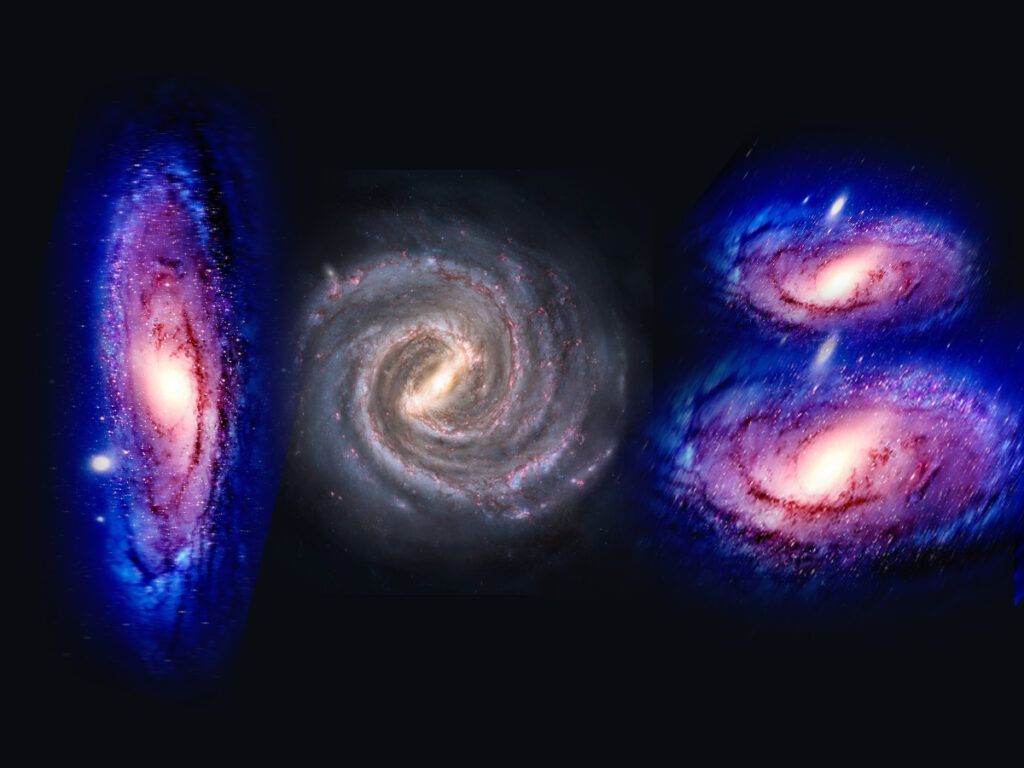Significance of 108 in Hinduism: Exploit Spiritual Connection
Significance of 108 in Hinduism
The number 108 holds immense significance in Hinduism, a religion with deep-rooted beliefs and practices that have been passed down through generations. This number is not just a numerical value but rather a sacred symbol that represents a multitude of spiritual and cosmic concepts. Its importance is woven into various aspects of Hindu rituals, traditions, and philosophies.

The Spiritual Harmony of 108:
One of the most prominent manifestations of the significance of 108 in Hinduism lies in spiritual practices. The repetition of mantras or prayers holds a central place in Hindu rituals, and it is not arbitrary that this repetition often occurs 108 times. This practice signifies spiritual completion and alignment with the divine.
The chanting of a mantra 108 times, known as “japa,” is believed to awaken spiritual energy, harmonizing the individual with the cosmic order. The rhythmic recitation, when performed with devotion and focus, is thought to purify the mind and elevate the practitioner to a higher state of consciousness.
Read More>> Kedarnath Temple: Where Faith Meets Jyotirling & Char Dham Yatra
Cosmic Symmetry:
The cosmic significance of 108 is deeply embedded in Hindu cosmology. According to ancient texts, the Earth is said to have 108 important energy lines or meridians, connecting it to the vast celestial expanse. This sacred geometry implies a cosmic symmetry, suggesting that the number 108 serves as a bridge between the microcosm of the individual and the macrocosm of the universe.
Astrologically, the number 108 holds sway as well. There are 27 constellations, each divided into four quarters, resulting in 108 segments. The lunar constellations, or Nakshatras, are crucial in Hindu astrology, and their alignment with the number 108 further underscores the cosmic harmony believed to exist within this numerical framework.
Yogic Traditions:
In the realm of yoga, the number 108 is intimately connected to the path of self-realization and inner transformation. In yogic traditions, there are said to be 108 sacred sites, each serving as a focal point for spiritual energy. Pilgrimages to these sites are undertaken as a transformative journey, aligning the seeker with the divine forces that permeate the universe.
Moreover, the human body, according to yogic anatomy, is believed to have 108 energy pathways or nadis converging at the heart chakra. The heart, considered the seat of consciousness, becomes the nexus where the individual soul connects with the universal spirit. This intricate network of energy channels symbolizes the interconnectedness of all aspects of existence.
Read More>> Omkareshwar Jyotirlinga Temple: Lord of divine word “OM”
The Astronomical Dance:
The dance between the Earth, Moon, and Sun also unveils the cosmic significance of 108. The average distance between the Earth and the Sun is about 108 times the Sun’s diameter. This celestial alignment, while seemingly coincidental, adds another layer to the cosmic dance that Hindu cosmology envisions.
The lunar calendar, vital in Hindu timekeeping, further emphasizes the connection between the number 108 and celestial bodies. The moon, with its 27-day cycle, aligns with the 108 segments, creating a celestial rhythm that resonates with the spiritual and cosmic themes embedded in Hindu culture.

Sacred Texts and Symbolism:
The significance of 108 is not confined to rituals and cosmic alignments; it is also intricately woven into the fabric of Hindu sacred texts. In the Upanishads, which form the philosophical foundation of Hinduism, the number 108 is associated with the ultimate reality and the concept of “Brahman.”
The Sanskrit language, the ancient language of Hindu scriptures, is comprised of 54 letters, each with a masculine (Shiva) and feminine (Shakti) form, resulting in a total of 108. This linguistic symmetry adds a layer of symbolic richness to the sacredness attributed to the number.
Cultural Reverence and Rituals:
Beyond philosophical and cosmic realms, the cultural significance of 108 is manifest in various Hindu rituals and traditions. In ceremonies and festivals, offerings are often made in sets of 108, symbolizing completeness and spiritual fulfillment.
The use of malas, beaded prayer necklaces, also reflects the significance of 108 in daily spiritual practices. These malas traditionally consist of 108 beads, with the 109th bead serving as the “guru bead.” The ritual of moving from one bead to the next during meditation or prayer symbolizes the journey of the seeker toward spiritual enlightenment.
Read More>> Arunachaleswara Temple: A Spiritual Experience of a Lifetime
Mathematics and Symbolic Divisibility:
Intriguingly, the number 108 is mathematically significant in Hindu culture. It is divisible by the sacred numbers 1, 2, 3, 4, 6, 9, 12, 18, 27, 36, and 54, reinforcing its status as a symbol of completeness and divine harmony.
The symbolic divisibility of 108 mirrors the interconnectedness of various aspects of existence, from the individual soul to the cosmic order. This mathematical harmony aligns with the spiritual and cosmic themes that underpin the significance of 108 in Hindu thought.
Conclusion:
In the symphony of Hindu spirituality, the number 108 emerges as a resonant and multifaceted note, vibrating across rituals, cosmology, yoga, and sacred texts. Its significance transcends mere numerical value, embodying a profound connection between the individual and the cosmos. From the rhythmic chanting of mantras to the cosmic dance of celestial bodies, the number 108 weaves a narrative of spiritual completeness and universal harmony.
FAQ:
Why is the number 108 important to Hindus?
The number 108 holds deep significance in Hinduism due to its pervasive presence in spiritual practices, cosmic alignments, and cultural symbolism. It is associated with completeness, cosmic harmony, and spiritual enlightenment. From the chanting of mantras 108 times to the alignment of celestial bodies, the number 108 serves as a symbolic bridge connecting the individual to the divine and the cosmic order in Hindu philosophy.
What does 108 mean spiritually?
Spiritually, the number 108 holds profound significance across various cultures, especially in Hinduism. It is considered a sacred and symbolic number representing completeness, spiritual fulfillment, and cosmic harmony. In practices like mantra chanting, there is a belief that repeating a mantra 108 times aligns an individual with the divine and brings about a sense of spiritual wholeness. The number’s connection to celestial bodies, sacred geometry, and cultural traditions reinforces its spiritual significance, emphasizing the interconnectedness of the individual soul with the vast cosmic order.
What is the mystery behind 108?
- Spiritual Harmony: Chanting mantras or prayers 108 times is believed to signify spiritual completion and alignment with the divine, fostering a connection between the individual and the cosmic order.
- Cosmic Symmetry: Hindu cosmology suggests that the Earth has 108 energy lines, reflecting a sacred geometry that symbolizes the connection between the microcosm of the individual and the macrocosm of the universe.
- Yogic Traditions: In yoga, 108 is associated with sacred sites and energy pathways within the human body, emphasizing the interconnectedness of the seeker with the universal spirit.
- Astronomical Alignments: The average distance between the Earth and the Sun is about 108 times the Sun’s diameter, and the lunar constellations align with the number 108, adding a celestial dimension to its mystery.
- Sacred Texts and Symbolism: Found in Upanishads and the Sanskrit language, the number 108 is linked to philosophical concepts and linguistic symbolism, contributing to its sacredness in Hindu culture.
- Cultural Reverence: Used in rituals, festivals, and the construction of malas (prayer necklaces with 108 beads), the number 108 symbolizes completeness and spiritual fulfillment in cultural practices.
- Mathematical Harmony: Being divisible by sacred numbers, 108 exhibits mathematical harmony, reinforcing its symbolic completeness and connection to divine order.
What is the significance of 108 beads?
- Spiritual Completeness: Chanting or repeating a mantra 108 times is considered spiritually significant, symbolizing completeness and alignment with the divine.
- Cosmic Harmony: The number 108 is associated with cosmic rhythms and alignments. For example, there are 108 segments between the Earth, Moon, and Sun, reflecting a cosmic dance that resonates with spiritual practices.
- Yogic Connections: In yogic traditions, there are believed to be 108 energy pathways or nadis converging at the heart chakra, representing the interconnectedness of the individual with the universal.
- Mathematical Harmony: The number 108 is divisible by sacred numbers, emphasizing its role as a symbol of mathematical and spiritual harmony.
- Cultural Tradition: Malas, with 108 beads, are used for meditation and prayer in Hinduism and Buddhism. The ritual of moving from one bead to the next signifies the spiritual journey toward enlightenment.
Is 108 a holy number?
Yes, in Hinduism, the number 108 is considered a holy and sacred number with profound spiritual and cosmic significance. It is woven into various aspects of Hindu philosophy, rituals, cosmology, and traditions, symbolizing completeness, harmony, and the interconnectedness of the individual with the universe. The significance of 108 extends beyond its mathematical value, representing a spiritual and cosmic resonance in Hindu culture.
What can 108 go into?
The number 108 has diverse mathematical significance. It is divisible by various sacred numbers in Hinduism, including 1, 2, 3, 4, 6, 9, 12, 18, 27, 36, and 54. This divisibility reinforces its symbolic completeness and alignment with cosmic and spiritual harmony in Hindu culture.
Why do rudraksha have 108 beads?
Rudraksha beads are believed to have 108 beads in Hindu tradition due to their profound spiritual significance. The number 108 holds cosmic and symbolic importance in various aspects of Hinduism, including astronomy, astrology, and spiritual practices. It is associated with the idea of completeness, spiritual fulfillment, and the connection between the individual soul and the universal consciousness. The 108 beads in a Rudraksha mala are considered to align the wearer with cosmic rhythms, facilitating meditation, and enhancing spiritual well-being.
How do you pray with 108 beads?
- Select a Quiet Space: Find a quiet and comfortable place to sit, free from distractions.
- Hold the Mala:
- Start with the bead next to the Guru bead (the larger central bead).
- Use your thumb and middle finger to hold the bead, with the index finger pointing away from you.
- Set an Intention or Mantra:
- Before starting, set a specific intention, prayer, or mantra for your meditation.
- Recite the Mantra or Prayer:
- With each bead, repeat your chosen mantra or prayer.
- Move to the next bead by gently sliding it between your thumb and middle finger.
- Continue the Cycle:
- Continue until you have completed all 108 beads, or until you feel your meditation is complete.
- If you reach the Guru bead and wish to continue, turn the mala around and move in the opposite direction.
- Avoid the Guru Bead:
- The Guru bead represents the divine or the higher self. Avoid crossing over it when counting beads.
- Maintain Focus:
- Keep your focus on the mantra, prayer, or intention throughout the meditation.
- Express Gratitude:
- Once you complete the cycle, take a moment to express gratitude and reflect on your meditation experience.
